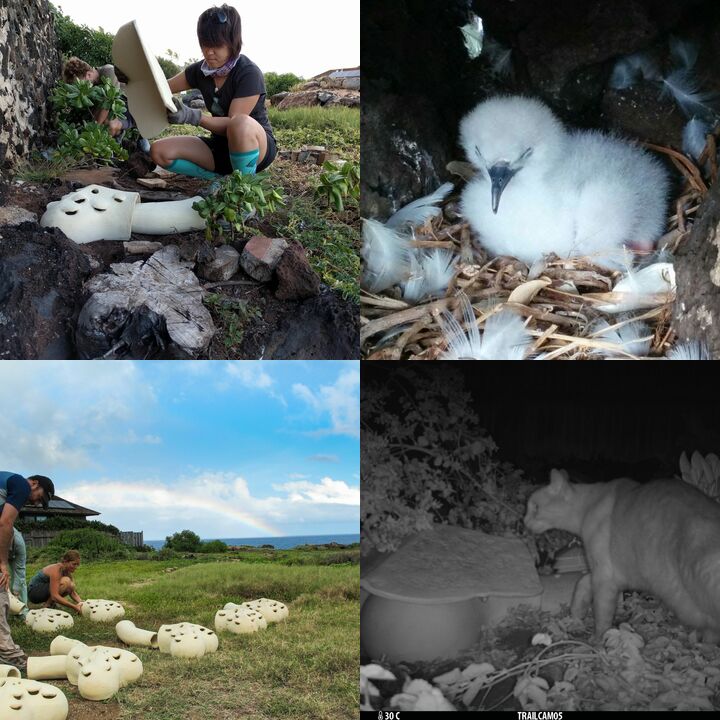SeaNest A.I. Predator-cam
The Problem
Seabirds are one of the most threatened taxa of birds on the planet. Many nest in underground burrows, are active only at night, and are difficult to monitor. These ground nesting species are vulnerable to predators and highly impacted by invasive species like rats, mongoose, and feral cats. In nesting colonies around the world, it is critical to identify and quantify any threats to species recovery. Oikonos develops innovative methods and tools for seabird research and conservation; our most successful example is our ceramic nest modules. The modules have been designed and installed for seabirds on four California islands and in Hawaii where hundreds of seabird pairs have used them. High-resolution cameras capture not only birds with their chicks, but also predators lurking through the colony. We propose to use machine learning for rapid imagery processing, a tool that can help research projects reallocate precious staff time. Through our partnership with local governments, communities, research institutions, and Conservation Metrics, we will develop a model for detecting some of the world’s most pervasive and common invasive predators.
Our Proposal
We will develop an efficient conservation tool for protecting native species, one that integrates technologically-advanced sensors and cameras and improves upon vetted methods to automate imagery classification. We will deploy cameras at seabird nesting colonies we manage. Some of these sites include ceramic module nests, created in 2009 for the purpose of conservation at a heavily-degraded seabird colony. Our nest modules are hand-built and made from clay, a natural material that mimics burrows and provides stable shelter. In 2018, we developed the first predator-proof homes with baffled tunnel entrances to reduce chick and adult death from predators, particularly feral and domestic cats. Using imagery classification through machine learning, we can quickly sift through thousands of bird interactions, predators, and other useful events at the colonies. This will help us evaluate the modules for their ability to exclude these non-native threats. Moreover, the application of AI to identify invasive predators is useful everywhere these types of animals are a threat. The technology will have immediate benefits to seabird colonies elsewhere, but also for songbirds, sea turtles, lizards, and countless endemic and endangered species globally. The technology will assist with feral cat control programs, rodent eradications, and can have applications to human cities where these animals are under-managed.
We Assume that...
We assume that seabirds will continue to nest in artificial ceramic homes that we previously installed
We assume cameras will be able to endure long-term deployment in field conditions
We assume seabirds will not be impacted by the presence of cameras
We assume that we will be able to remotely access data collected by our cameras
Constraints to Overcome
One of the greatest challenges to seabird research programs is the remote locations of nesting sites and the necessary disturbance to birds in their burrows to collect scientific measurements. Our methods will integrate passive data collection methodology into an established habitat restoration tool to reduce researcher impacts to their subjects. The technology and hardware we will use already exists. The main challenge will be to prepare the images and train the model to detect predators across different habitat types.
Current Work
Identify and collate existing imagery with tags for target species, interactions, and events. Install cameras at nesting colonies to collect new imagery. Finalize partnerships with experts in machine learning to produce the model. Perform quality control on the training data.
Current Needs
Our project will benefit from assistance in identifying a cost-effective source for predator-monitoring, and will seek support from our peers to develop the ML model. We will further seek volunteers, conservation project partners, and enthusiasts in remote sensing to help with imagery collection and classification.
